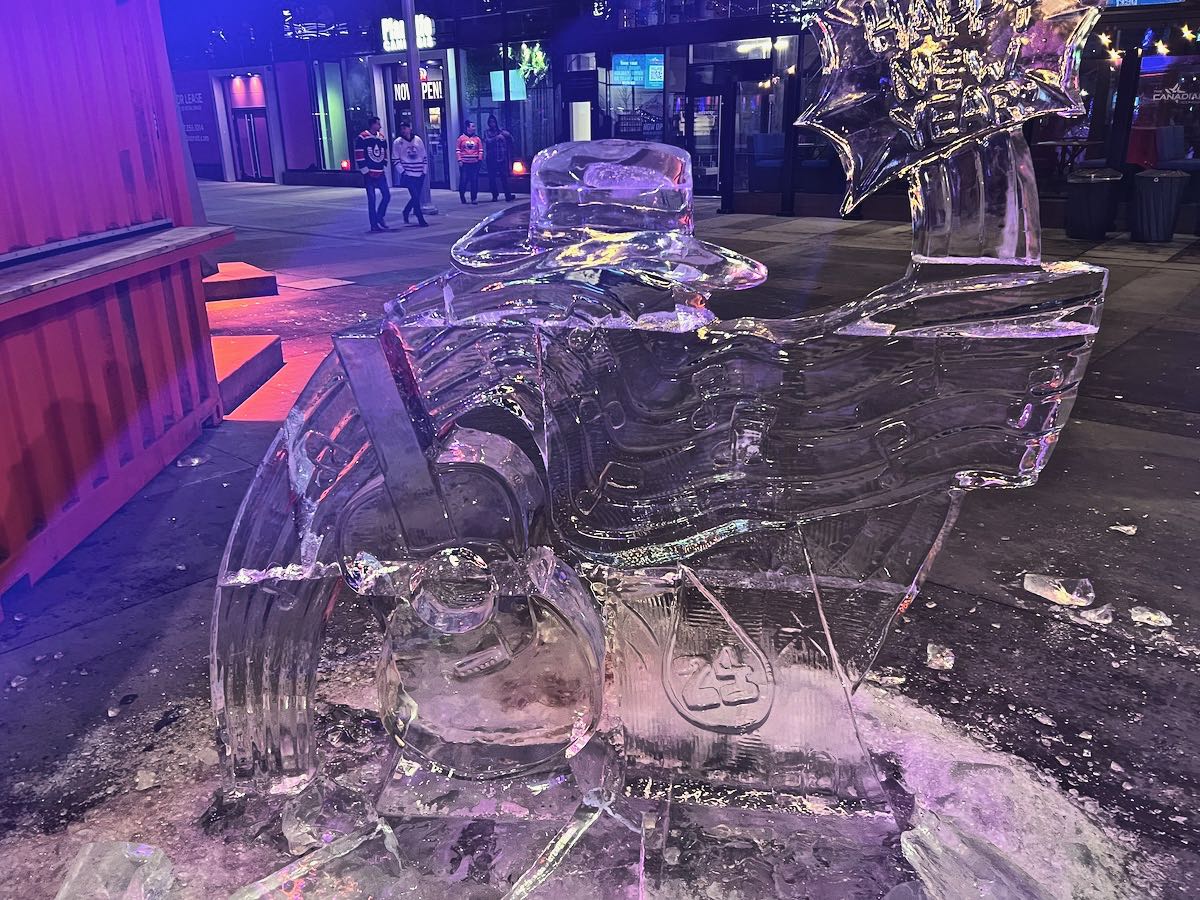The average Albertan’s interactions with ice tend to err on the side of the mundane — chipping away at a frosty windshield, lacing up for a game of shinny or even the dreaded slip-and-spill on one of our infamously slick sidewalks. But for a special few, winter’s icy bounty offers up a different opportunity: to create dazzling, fantastical works of art. Those works of art will be on display in the heart of our city this week as Activate Arts Alberta (formerly known as Ice on Whyte) brings back its fan-favourite ice-carving competition, Chiseled.
Now in its 21st year, the competition will pit seven two-person teams against one another as they race to create works of art out of 40″ by 20″ by 10″ ice blocks. Cliff Vacheresse is one of this year’s competitors — alongside his carving partner, Steve Buzakand — and has been a mainstay at Chiseled since he first attended the competition as a spectator in 2011.
“[I] worked the festival for a few years in a row and was introduced to a lot of the artists who became friends and encouraged [me] to try,” Vacheresse said.
A carpenter by trade, Vacheresse fell in love with ice-carving and eventually won Chiseled’s novice competition during his early years practicing the art. Since then, he’s become heavily involved in the medium, creating ice slides, and mazes and orchestrating ice-carving demonstrations with Activate Arts Alberta. But working with ice is an entirely different experience than the wood Vacheresse handles during the summer months. Sculpters employ a special, mechanically produced ice known as Clinebell ice, often sourced from out of province.
“It’s completely flawless ice,” Vacheresse says. “It’s clear throughout, with no air … inside. That’s what makes it sculptable.”
Using tools like chainsaws, chisels (hence the name) and die grinders, Vacheresse and his fellow artists are able to turn these 297-pound blocks of ice into things like dragons, the Greek god Poseidon and even abstract art. The process is far from simple and can take dozens of hours to complete. On top of this, is the need for just the right temperature to ensure the process goes smoothly. Vacheresse says the ideal conditions for ice carving are a balmy -5 to -15 Celsius.
